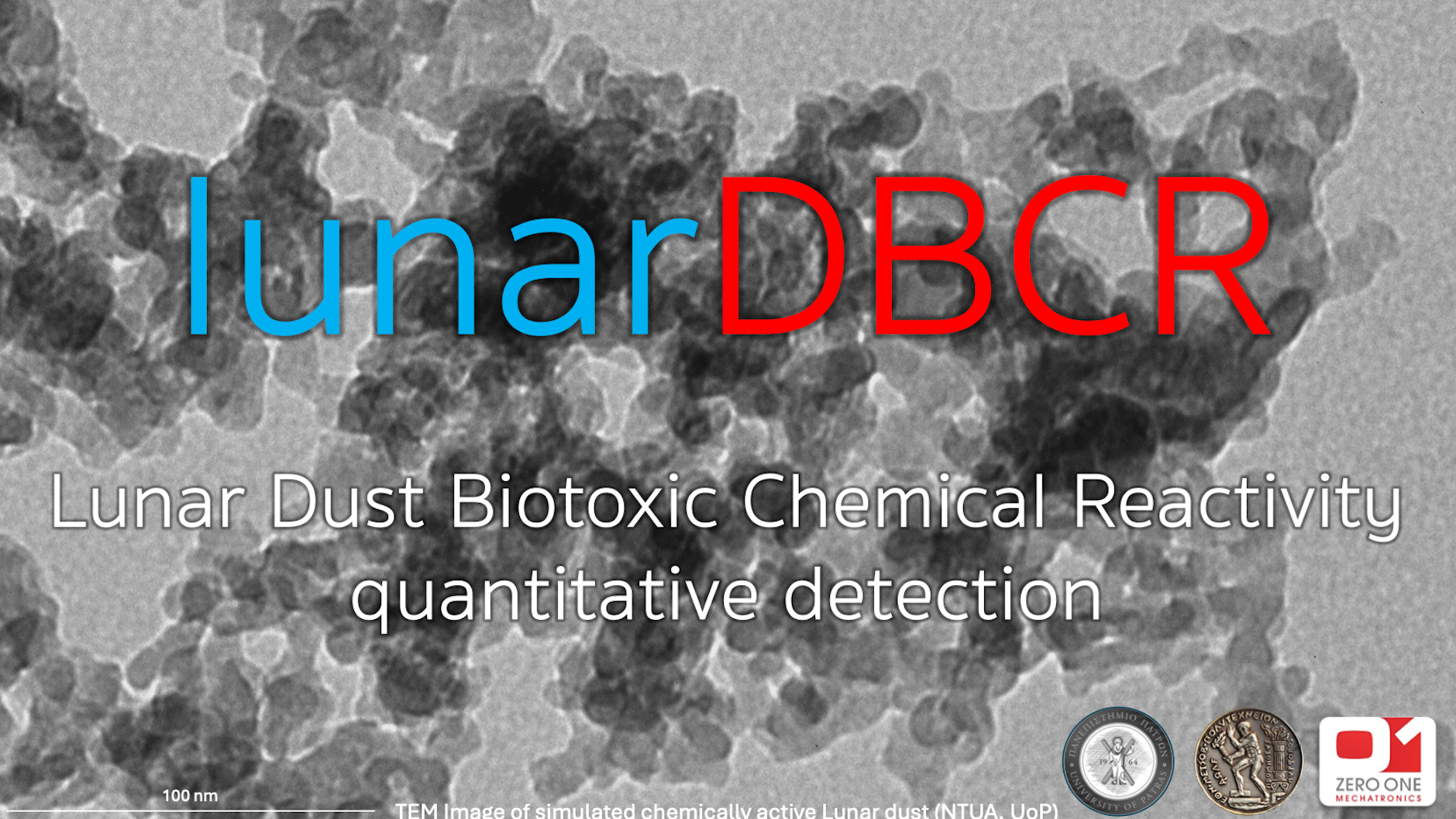Duration: 18 months
Biotoxicity of Lunar dust is declared by NASA a serious problem after its first successful mission in 1969 to land humans on the Moon. NASA failed to address this issue even during all Apollo missions. Astronaut suits, boots and helmets were covered with fine-grained dust, also causing throat, lung, and skin irritation. A surge of interest for the toxic effects of lunar dust has thus followed Apollo missions, initiated from NASA and ESA. The official website of the United States government has archived over 500 studies, in 2007–2016, indicating a strong interest to understand lunar dust exposure toxicity effects. NASA has asserted hydroxyl radicals as the key biotoxicity chemical agent of Lunar soil, generated by water-wetted fractured silicate mineral surfaces. Their biotoxicity on astronauts stems from the fact that they are generated by the same mechanism when lunar dust comes in conduct with the water-based fluids in trachea, lungs, diaphragm etc. This among others led NASA to recognise the need to set standards for astronaut exposure to dust in future Lunar missions (i.e., ARTEMIS). We propose to build a new micro-device to contribute in establishing the above requirement. Its key innovation, in that respect, is the measure that this chemical can be used as a marker of Lunar soil biotoxic chemical reactivity, thus setting up more reliable exposure limits. Other innovations include: a) its hand-held use to measure the chemical reactivity of dust on astronaut outfits, space station water supply chambers, greenhouse soils, inside/outside settlements, and in Lunar dust biotoxicity lab experiments, and for orbital use in atmospheric dusts (also on Mars); b) in performing measurements of this highly reactive chemical with high sensitivity under anaerobic Moon conditions, being also easily adaptable to aerobic conditions. c) based on a proprietary chemical method, the device is conceptualised and constructed for the first time, with high probability to be patented.

